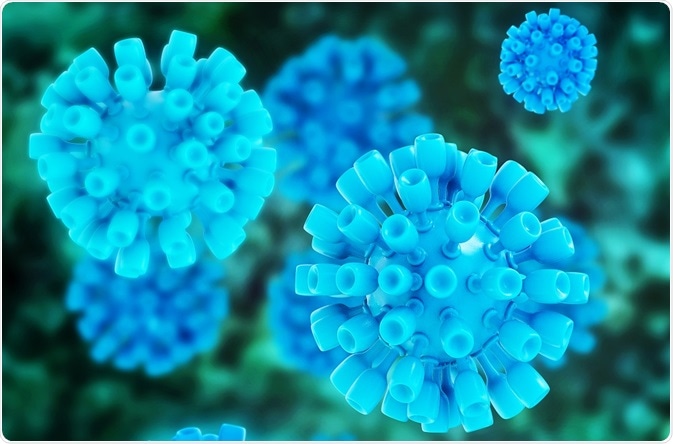Enterovirus 72, otherwise known as Hepatitis A, is a single-stranded RNA virus belonging to the Picornaviridae family.
 Image Credit: xrender / Shutterstock
Image Credit: xrender / Shutterstock
Enterovirus 72 is more likely to affect people in countries with poor sanitation, as outbreaks have mainly been attributed to food or water contaminated with fecal matter.
However, outbreaks have also occurred in developed countries in the past. Viral strains of hepatitis account for over 15,000 deaths every year in the US alone, with 2,007 new cases of acute Hepatitis A being reported in the US in 2017. These outbreaks in industrialised countries can usually be traced back to poor food handling/hygiene in restaurants.
Enterovirus 72 structure
The structure of a mature hepatitis A viron was recently elucidated using a technique called X-ray crystallography. Enterovirus 72 exhibits much less detail on it’s exterior than most other picornaviruses, but still maintains the classic icosahedral structure of all other common virions.
It has a very smooth surface, with no external depressions. It is thought that this may allow the virus to bind to certain antibodies. These unique structural features therefore suggest that, the uncoating stage of the infection (where the virus releases its genetic material into the host cell), is performed in a completely different way to other viruses in the Picornaviridae family.
How Enterovirus 72 infects cells
The exact way in which Enterovirus 71 infect liver sells is currently unknown – however, a study conducted in the year 2000 used the liver cells (hepatocytes) of mice, and then human hepatocytes, to observe how viral cell infection occurs in this case.
It was proven that a certain antibody – immunoglobulin A (IgA) is responsible for, mistakenly, binding to the hepatitis A virus, and allows it to infect the hepatocytes via an asialoglycoprotein receptor inside the cell, which willingly binds with the IgA carrying the virus.
The virus is then allowed to self-replicate inside the cell, thus the full-scale infection begins – with the virus hijacking all the other surrounding hepatocytes and destroying them along the way.
Enterovirus 72 prevention
The most reliable way to prevent infection by hepatitis A is to get a vaccination, as when a person is infected with the virus, the antibodies produced by the immune system remain inside the body for life – providing a lifetime protection against contracting the disease in the future.
The vaccine is ‘inactivated’ – this means that the vaccine does contain Hepatitis A viruses, however, they cannot cause infection, as they have been “killed” (viruses are not living, however, they can be ‘inactivated’).
The Enterovirus 72 vaccination consists of two doses, given at least 6 months apart. Since this vaccine was introduced to the US at the start of 1996, the number of cases reported each year has gone down from approximately 31,000 cases, to approximately 1,500 cases.
Further Reading
Last Updated: Aug 23, 2018